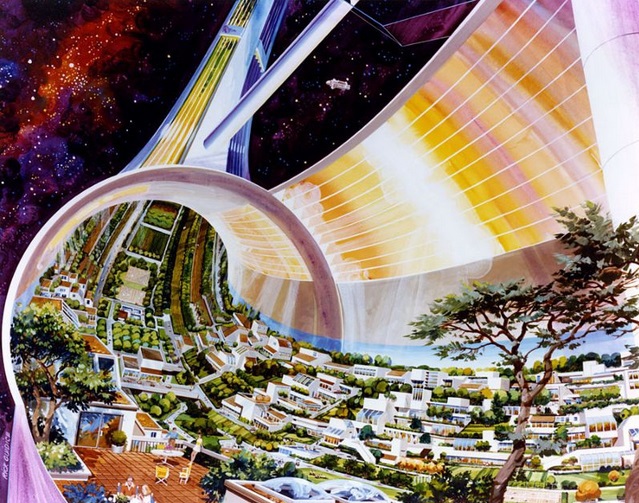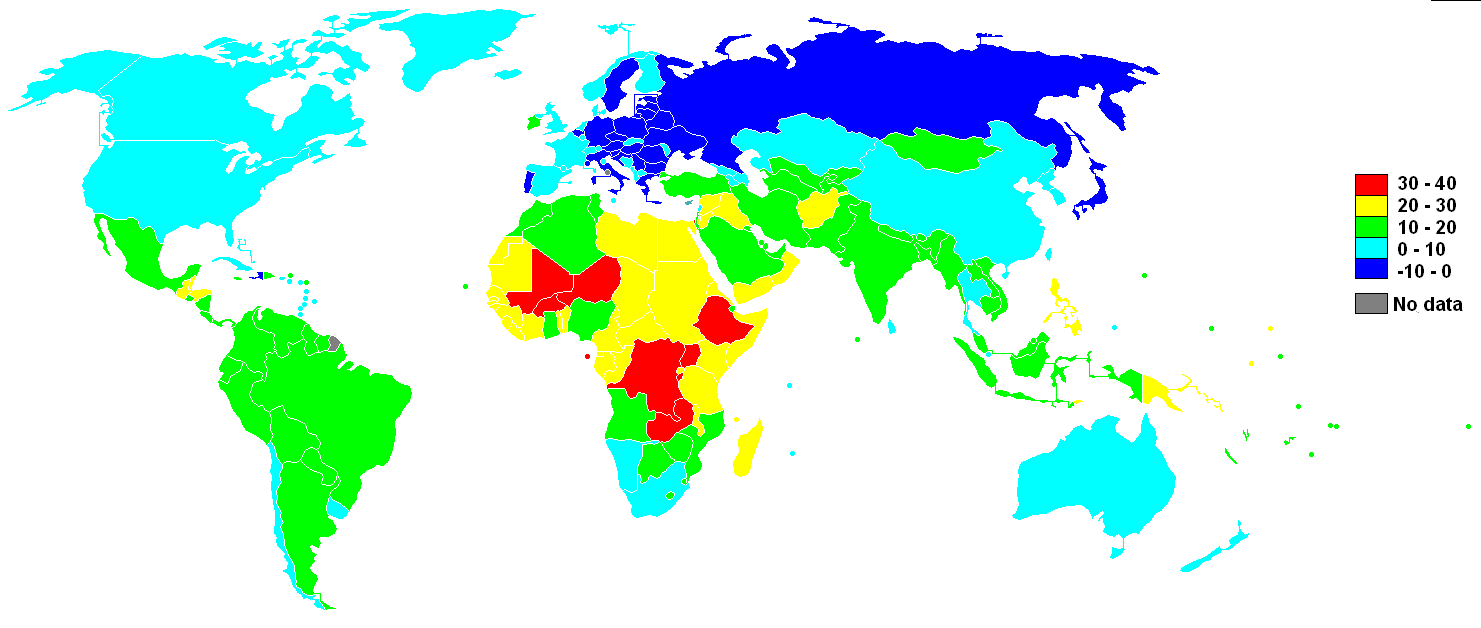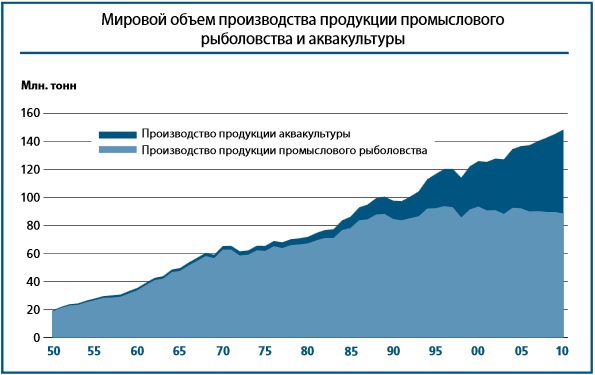Through hardship to the stars. To the imperatives of cosmic colonialism

"Humanity will not forever remain on Earth, but in the pursuit of light and space, it will first timidly penetrate the atmosphere, and then will conquer all the space around it." The famous founder of cosmonautics Tsiolkovsky supplemented his equally famous phrase “The planet is the cradle of reason, but you cannot live forever in the cradle”.
By this, Konstantin Eduardovich expressed not only personal opinion, but also the aspirations of all enlightened mankind, even before those times when the heroes of Jules Verne's works flew in cannon shells to the moon. Space was just as natural a space for the flight of imagination (and not only), as at that time, a huge ocean surface stretching far beyond the horizon, and capturing the pioneers of the era of great geographical discoveries there.
One way or another, through the thorns of the world warrior, man nevertheless paved his way into space by the middle of the 20th century. But, unfortunately, the euphoria from the first flights to the Earth’s orbit, and then to the Moon, was replaced by the relative stagnation of manned space exploration for half a century.
As a result , the 2001 Space Odyssey was far less glorious than Kubrick and Clark had imagined.
Why this happened and what to expect from astronautics in the future, you can try to understand by examining in three parts the main imperatives that justify the expansion of man into space.
Part 1. Imperative of overpopulation. Demography and resources.
Most often, this argument is mentioned as the main reason for the development of other worlds. Indeed, over the past 100 years, the world's population has increased by 7 times, only in a day there are up to 250,000 new earthlings, which, given the global mortality rate, gives an increase of 80,000 people / day! And this number is constantly growing.
However, if you delve into the essence of the problems, then everything does not look so deplorable.
For example, according to UN statistics, if in the 50s of the 20th century there were 5 children on average for every woman on the planet, this figure fell by half by 2010 (2.5 with a decreasing trend). Almost all developed countries in the world are experiencing a general decline in fertility or a negative population growth (even in China it is close to 0). This is a

consequence of the PRC's effective demographic policy, which is applicable in other countries.

The largest population growth is in the developing countries of Asia, the Middle East, Africa and Latin America. However, there is also a general decline in the birth rate due to an increase in living standards and the gradual urbanization of the rural population.
According to most models of the demographic transition , while maintaining the current trend of population growth, the peak will be at the end of the 21st century from 11 billion people (or 17 billion in the most pessimistic forecast), which is most likely to be replaced by a negative population growth on Earth. For the famous Russian scientist Sergei Kapitsaand 17 billion is not the limit for planet Earth: "under reasonable assumptions, the Earth can support for a long time up to 15 - 25 billion people." And this applies not only to the occupied areas (7 billion people occupy no more than 10% of the Earth’s land! ), But also to food resources.
The density of human settlement of the earth's land (inhabitants per km²) The

reasonable assumptions of Sergei Petrovich seem more realistic if you become familiar with the global system of agriculture:
Urbanization and agriculture account for 37% of the 149 million km² of land land (3% for urban and rural buildings, cultivated land - 11%, pastures and meadows - 23%). If of the remaining 63%, half of the land area is occupied by forests (33%), then the remaining 30% is not used at all! This is approximately 40 million km2, which is 10 million km2 more than the area of Africa, and 3 million km2 more than the surface area of the moon.
To master the earthly deserts, of course, would be much simpler and more logical than to tame the incredibly difficult climatic conditions on other planets. This would increase the harvest by at least two times!
Not everything is hopeless and with the depletion of the biological resources of the world's oceans (hydrobionts). On the one hand, over the past decades, there has been a steady increase in the production of hydrobionts (80 million tons in 1980 and 140 million tons in 2000!), Which upset the biological balance of the world's oceans, but on the other hand, this growth is largely due to the development of aquaculture - the artificial cultivation of hydrobionts on an industrial scale .

However, the main problem with the production of food resources is associated not so much with the reduction of hydrobiotic or land resources (per capita), but with environmental problems and the organization of production / distribution of these resources. This leads to the fact that 1/3 of the world's manufactured food is simply thrown away! It turns out not a rainbow picture, 15% of the world's population is systematically starving, although food production exceeds world demand by 16%! Obviously, the solution to this problem is not on Mars, much less on the Moon.
Recent advances in genetic engineering allow us to hope that people will be able to create biological cultures that can not only survive, but also produce rich crops in the difficult conditions of terrestrial deserts, and even transform these regions.
And it may be that the prophecies of Tsiolkovskyabout the possibility of "(...) even making huge greenhouses with walls very thin. Maybe even the plants are processed in such a way that they live without an external gas environment, processing everything inside themselves like zoophytes (cacti). If we dream of such a transformation for animals, then all the more we can scientifically think about the same for simpler creatures, what plants are. ”Will touch upon the application by man in space of methods and biotechnologies very successfully tested on Mother Earth.
Artificial bacterium Mycoplasma capricolum. Probably the first step towards fulfilling the “prophecy” of Tsiolkovsky.

Much more encouraging is the situation with minerals. Earth is not only the largest planet in the earth's group, but also exceeds in mass all the planets of this group combined, including the moon. Geologists consider our rocky giant a theoretically inexhaustible storehouse of minerals (except for hydrocarbons).
However, the extraction of resources on the Moon and in the asteroid belt can be justified in the event of a demand for rare-earth and promising resources. One of the most likely solutions to the energy problems of mankind is considered controlled thermonuclear fusion. At first, it is proposed to use a deuterium-tritium reaction. The first isotope of hydrogen is found in huge quantities in the oceans (5 * 10 ^ 16kg!), And tritium is obtained by synthesizing lithium 6, which is enough both in the earth's crust (20 g / t of rock) and in the thickness of the oceans (17 mg / l). However, in the future it is possible to use the extremely rare helium 3 isotope for the deuterium-helium reaction, with much greater energy release than in the deuterium-tritium cycle!
Large reserves of this isotope are associated with lunar regolith, which may become the main reason for the permanent presence of man on the lunar surface in the future. Of no less interest are the metals of the platinum group, which are rich in class M asteroids, which are especially rare on Earth, iridium.
A touching clip about the everyday life of future helium miners 3. The movie "Moon 2112".
In the next part, we will examine the scientific and technical imperatives of human presence in space. There is no doubt that it is scientists and engineers who will be the forerunners of the shock detachments of the working space corporations of the future. And these advanced thinkers will not be limited only by potential financial benefits.
